Yoga for Back Pain Relief & Prevention
- Home
- Medical Yoga Therapy
- Blog Detail
Back pain is one of the most common physical ailments that people experience in today’s sedentary lifestyle. Whether it’s due to long hours spent sitting at a desk, improper posture, or a lack of regular physical activity, the discomfort can affect your quality of life significantly. Yoga, an ancient practice that combines physical postures, breathing techniques, and mindfulness, offers a holistic approach to alleviating back pain and preventing it from recurring.
In this article, we will explore how yoga helps relieve back pain, the science behind it, effective yoga poses for different levels of back discomfort, and tips for practicing safely.
Table of Contents
ToggleUnderstanding Back Pain and Its Causes
Back pain can arise from various factors, including:
- Muscle strain: Overuse or sudden movements can strain the muscles and ligaments in your back.
- Poor posture: Slouching while sitting or standing can put unnecessary pressure on your spine.
- Herniated discs: When a spinal disc bulges or ruptures, it can compress nearby nerves, causing pain.
- Arthritis: Conditions like osteoarthritis can lead to stiffness and pain in the lower back.
- Lack of physical activity: Weak muscles, particularly in the core and back, fail to support the spine adequately.
Yoga addresses many of these issues by improving flexibility, strength, and posture while promoting relaxation and reducing stress—all of which contribute to back health.
How Yoga Helps Relieve Back Pain?
- Strengthens Core Muscles: Yoga poses engage and strengthen the core muscles, which play a crucial role in supporting the spine.
- Improves Flexibility: Tight muscles in the hips, hamstrings, and back can limit mobility and strain the spine. Yoga stretches these muscles, enhancing flexibility and reducing tension.
- Enhances Posture: Practicing yoga increases body awareness, helping you maintain proper alignment in daily activities.
- Promotes Relaxation: Stress often manifests as physical tension, particularly in the back. Yoga’s focus on mindfulness and breathwork helps alleviate mental stress and physical strain.
- Boosts Circulation: Improved blood flow from yoga aids in delivering nutrients to the spine and muscles, accelerating healing and reducing inflammation.
Effective Yoga Poses for Back Pain Relief?
Beginner-Friendly Poses
Child’s Pose (Balasana)
- Benefits: Stretches the lower back, hips, and thighs.
- How to Do It: Sit on your heels, extend your arms forward, and lower your torso to the floor. Relax your forehead on the mat and breathe deeply.
Cat-Cow Stretch (Marjaryasana-Bitilasana)
- Benefits: Improves spinal flexibility and relieves tension in the back.
- How to Do It: Alternate between arching your back (cow pose) and rounding it (cat pose) while on all fours.
Supine Twist (Supta Matsyendrasana)
- Benefits: Stretches the spine and promotes spinal mobility.
- How to Do It: Lie on your back, bend one knee, and bring it across your body while keeping your shoulders grounded.
Bridge Pose (Setu Bandhasana)
- Benefits: Strengthens the lower back and glutes.
- How to Do It: Lie on your back, bend your knees, and lift your hips toward the ceiling, keeping your feet and shoulders grounded.
Intermediate Poses
Downward-Facing Dog (Adho Mukha Svanasana)
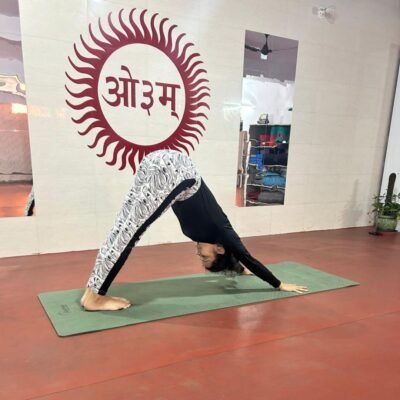
- Benefits: Stretches the spine, shoulders, and hamstrings.
- How to Do It: From all fours, lift your hips up and back, forming an inverted V shape.
Sphinx Pose
- Benefits: Strengthens the lower back and opens the chest.
- How to Do It: Lie on your stomach and prop yourself up on your forearms while keeping your shoulders away from your ears.
Extended Triangle Pose (Utthita Trikonasana)
- Benefits: Stretches the sides of the torso and strengthens the legs.
- How to Do It: Stand with your feet wide apart, reach one arm toward the ceiling, and lean sideways to touch your shin or ankle with the opposite hand.
Cobra Pose (Bhujangasana)
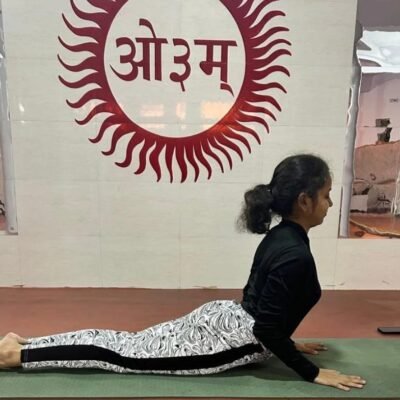
- Benefits: Strengthens the lower back and promotes spinal extension.
- How to Do It: Lie on your stomach, place your hands under your shoulders, and lift your chest while keeping your elbows slightly bent.
Advanced Poses
Wheel Pose (Urdhva Dhanurasana)
- Benefits: Strengthens the entire back and improves flexibility.
- How to Do It: Lie on your back, place your hands under your shoulders, and push up into a backbend.
Half Lord of the Fishes Pose (Ardha Matsyendrasana)
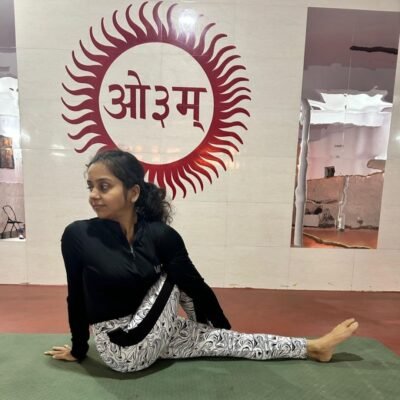
- Benefits: Enhances spinal mobility and stretches the shoulders and neck.
- How to Do It: Sit with one leg bent over the other, twist your torso, and place one hand on the ground behind you for support.
Camel Pose (Ustrasana)
- Benefits: Stretches the entire front body and strengthens the back.
- How to Do It: Kneel on the floor and arch your back, reaching for your heels with your hands.
Tips for Safe Practice
- Warm-Up: Begin with gentle stretches to prepare your body for more challenging poses.
- Listen to Your Body: Avoid poses that cause sharp pain or discomfort. Yoga should be restorative, not aggravating.
- Use Props: Blocks, straps, and cushions can help you maintain proper alignment and reduce strain.
- Focus on Breathing: Synchronize your movements with deep, mindful breaths to enhance relaxation and effectiveness.
- Seek Guidance: If you’re new to yoga or have severe back pain, consider consulting a yoga instructor or healthcare provider for personalized recommendations.
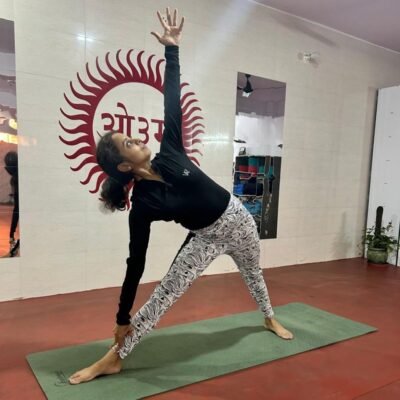
Preventing Back Pain with Yoga
Incorporating yoga into your routine can prevent back pain by:
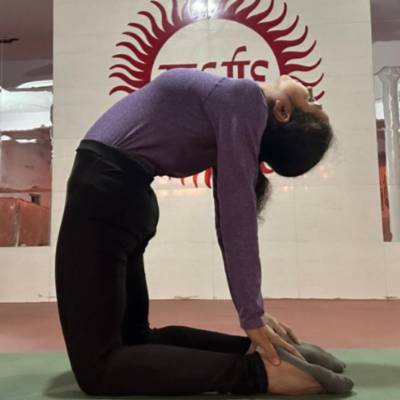
- Maintaining a Healthy Spine: Regular practice keeps your spine flexible and resilient.
- Building Strength: Strong muscles support your back, reducing the risk of strain.
- Improving Posture: Yoga enhances body awareness, encouraging proper posture throughout the day.
- Reducing Stress: Lower stress levels minimize the risk of tension-related pain.
- Encouraging an Active Lifestyle: Yoga motivates you to stay physically active, which is essential for back health.
The Role of Breathwork in Back Pain Relief
Pranayama, or yogic breathing, is a powerful tool for managing back pain. Techniques like diaphragmatic breathing, alternate nostril breathing (Nadi Shodhana), and Ujjayi breath can help:
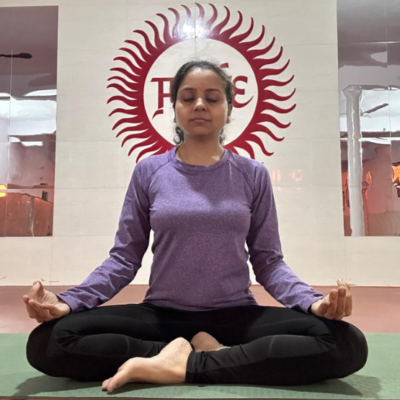
- Relax tense muscles
- Reduce stress
- Improve oxygenation to tissues
- Support mindfulness and body awareness
When to Consult a Professional?
While yoga is generally safe and beneficial, it’s essential to consult a healthcare professional if:
- Your back pain is severe or persistent.
- You experience numbness, tingling, or weakness in your legs.
- The pain is accompanied by other symptoms like fever or unexplained weight loss.
A physical therapist or yoga therapist can provide tailored guidance to address your specific needs.
Creating a Sustainable Yoga Practice
- Set Realistic Goals: Start with short, manageable sessions and gradually increase their duration and intensity.
- Establish a Routine: Consistency is key. Aim to practice yoga 3-5 times a week for best results.
- Incorporate Variety: Include a mix of poses that target different muscle groups to keep your practice balanced.
- Stay Mindful: Focus on your breathing and body sensations to maximize the benefits of each pose.
- Track Your Progress: Keep a journal to note improvements in your flexibility, strength, and pain levels over time.
Conclusion
Yoga offers a gentle yet effective solution for back pain relief and prevention. By strengthening the core, improving flexibility, enhancing posture, and reducing stress, yoga addresses the root causes of back discomfort. Whether you’re a beginner or an experienced practitioner, incorporating yoga into your daily routine can transform your back health and overall well-being.
Embrace the practice with patience and consistency, and let yoga guide you toward a pain-free, balanced life. For personalized guidance and support, consider joining classes at Yoga With Barkha, where we blend ancient wisdom with modern techniques to help you achieve your wellness goals.
Share this

About Us
Quick Links
Contact Info
- B-69, Arya Samaj Mandir, Sector - 33, Noida, Uttar Pradesh 201301
- +91-8800094560
- yogawithbarkha.27@gmail.com
